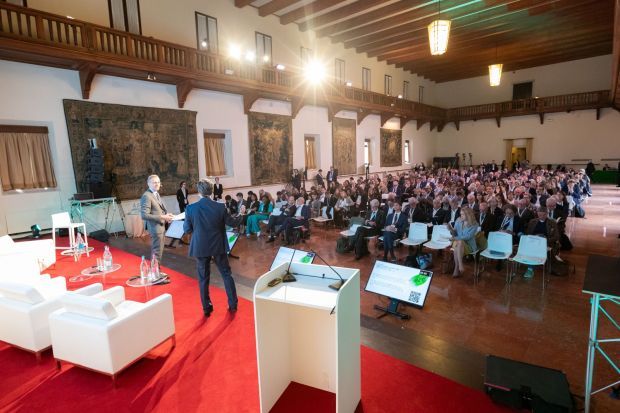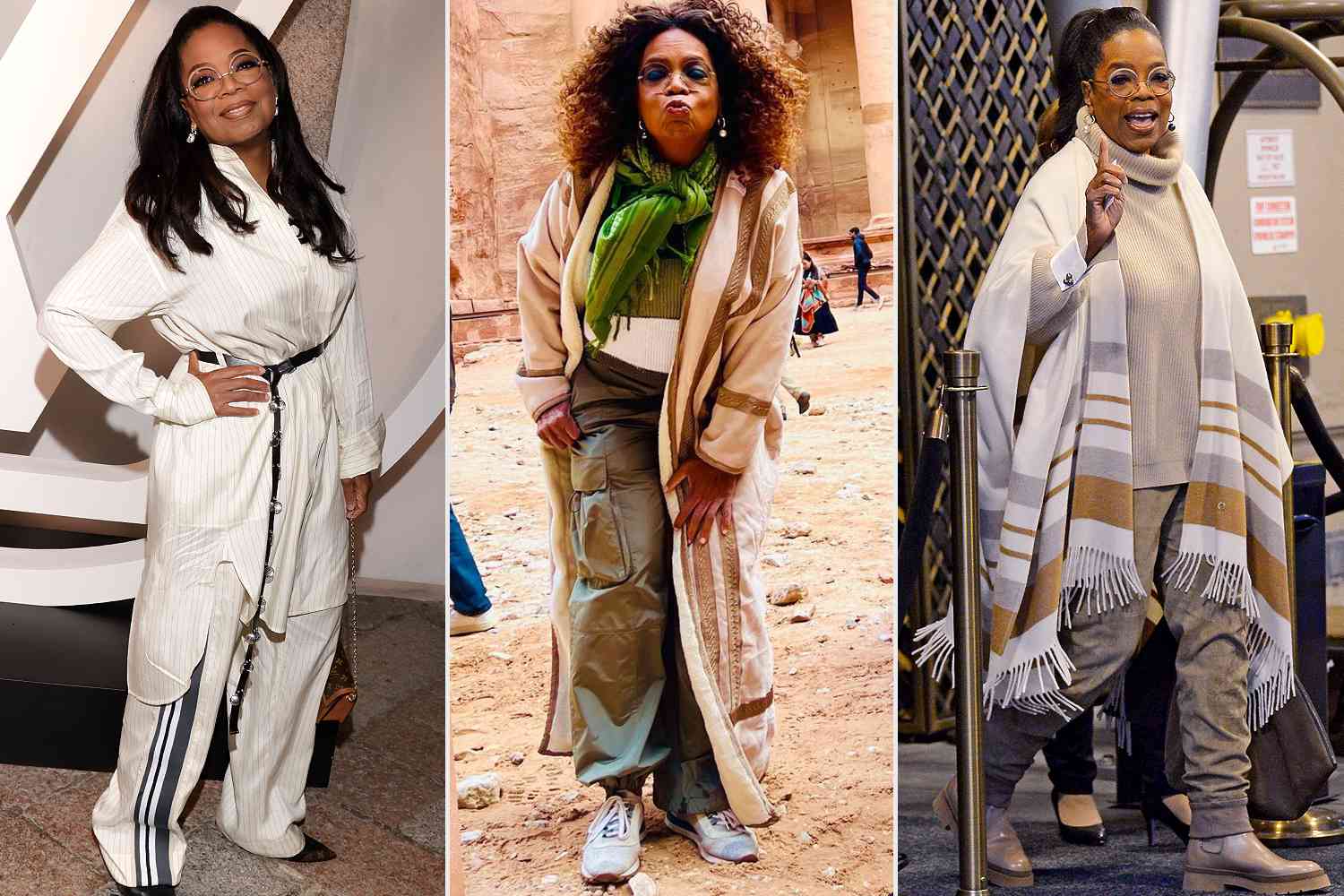In Venice, the first day of the work of the 2nd edition of the “Venice Sustainable Fashion Forum,” the summit promoted by Sistema Moda Italia, The European House – Ambrosetti and Confindustria Veneto took place.
The Forum, titled “Boosting Transition,” addressed molye issues and problems related to sustainability in the fashion industry by embracing values and goals and recognizing the need to initiate a serious debate on the topic in order to achieve a concrete and just transition.
“These two days intend to offer Italian and international entrepreneurs and managers in the Fashion&Luxury sector the indispensable elements to correctly and responsibly interpret the challenges of sustainability,” said Flavio Sciuccati, senior partner & director, Global Fashion Unit, The European House – Ambrosetti, creator and founder of the Forum together with Sistema Moda Italia and Confindustria Veneto Est.
“This edition of the forum entitled ‘Boosting Transition’ underscores the sense of urgency for our industry that is lagging far behind other more virtuous sectors. On the social sustainability side, there has been a collective undoing of the Rana Plaza tragedy ten years ago. Today it is imperative for everyone-brand and industry, luxury and fast fashion-to work together to improve this situation,” he continued.
“The 2023 edition of the Venice Sustainable Fashion Forum will focus on the value chain of companies, the first to address sustainability challenges with a specific focus on EPR and textile recycling. The circular one is a supply chain completely to be reinvented, where it will be new professionalism together with an alternative vision of economy and consumption,” said Sergio Tamborini, President of Sistema Moda Italia.
During the conference they presenetd the 2nd edition of “Just Fashion Transition 2023,” the Permanent Observatory on the Sustainable Transition of Key Supply Chains in Fashion, Apparel, Footwear and Leather Goods by The European House of Ambrosetti.
The strategic study analyzed more than 2,800 Italian and European companies, assessed the ESG performance of 366 companies in the Italian supply chain, benchmarked the sustainability performance of the top 100 European companies, compared with 21 industry experts, and conducted policy intelligence on 32 regulatory instruments directly affecting the future of European fashion.
Among the key findings that emerged from the Just Fashion Transition 2023 study, the respondents expressed their opinions and defined some results that were a basis for discussion and spur to find solutions that can improve the impact of the textile and apparel industry.
Photo: Venice Sustainable Fashion Forum
The 2nd Venice Sustainable Fashion Forum
Doubts about EU regulations
In 2022, the European Commission launched the “EU Textile Strategy,” a massive initiative aimed at establishing a common framework and vision for the transition of the textile industry, which encountered several obstacles during its gestation.
Out of 14 major legislative actions presented, only 51% appear to have received consensus, and there are major delays in approvals, related to difficulties encountered during dialogues or the influence exerted by pressure groups.
A preliminary impact analysis on the proposed new Ecodesign Regulation carried out on specific product categories is not encouraging. For example, applying the principles to 100% cotton T-shirts would only result in a cut of about 3.51 million tons CO2, equivalent to 0.3% of Europe’s annual carbon footprint.
The EU strategy also includes a new Directive to counter the negative impacts associated with shipping waste to third countries. Today, fashion stands out as the sector with the largest volume of waste exported to non-OECD countries (93.5% of the total), a value that increased fivefold between 2000 and 2019, reaching 1.7 million tons. But the European proposal implies a deep and complex reform to streamline and strengthen the European customs system.
Producing sustainable garment costs twice as much, while average consumer spending falls
The total production cost for a traditional cotton T-shirt is about US$3.87. The garment is then resold to the consumer at about two times the price (up to US$8). In contrast, case studies show that producing an ethical fair trade cotton T-shirt can cost up to US$8.72 with a retail price of about US$36-four times the cost of production.
“Sustainable fiber does not exist.” Environmental footprint is reduced through technology
About 70% of the fibers used to make clothing and upholstery fabrics are synthetic (e.g., polyester and nylon). While natural fibers are commonly perceived as more “environmentally friendly” because they are renewable and biodegradable, evidence shows that, in some cases, they can exert greater environmental impacts than synthetic or man-made alternatives. Cotton is one example.
In 2020, EU-27 countries imported more than 8.7 million tons of textile materials and produced 6.9 million tons of finished textile products. Activities attributable to textile production produced emissions of 121 million tons of CO2eq, using 175 million tons of virgin raw materials, consuming 24,000 million cubic meters of water and occupying 180,000 square kilometers of land-about 400 square meters per person.
Yet, according to the European Environment Agency the environmental footprint of textiles between 2017 and 2020 reports that unit environmental impact of household textiles has decreased by an average of 46.3% in just four years.
Also, between 2017 and 2020, technological development in the Fashion industry advanced by 23.3% mainly driven by the increase in patents filed.
Consumer attitudes and “waste” of online returns
Out of the total, 58% of global consumers believe that it is important to act first personally, but they can rarely buy sustainable clothing in regular stores.
What’s more, about 30% of online purchases are returned, and that 70 percent of these returns are the result of a “change of mind,” without realizing the repercussions: such as sending large amounts of “unwanted” garments to landfills. A considerable portion ends up in Africa, where more than 50% of used clothing immediately becomes waste
Recycling and reusing are resources
Estimates of textile waste produced annually in Europe range from 5.2 million tons to 7.5 million tons-equivalent to about 26 billion garments, with 20% growth expected by 2030. More than 60% of textiles thrown away are composed of synthetic fibers, such as polyester. On average, out of 35 textile items thrown away each year by a European citizen, three are recycled and less than one is reused in the domestic market.
The European textile recycling industry is worth more than $4.6 billion, or 29.6% of the total value globally, and handles more than 32% of the textile waste generated annually on the continent (about 700,000 tons). In this context, given the increasing concentration of synthetic garments in the European market, recycling is an increasingly promising solution.
Reuse, in turn, avoids up to 97% of CO2 emissions and reduces water consumption by 99% compared to chemical recycling. The second-hand luxury market, worth US$24 billion in 2018, appears to be growing rapidly, with a 28% increase by 2022.
Social sustainability, a challenge for companies
Ten years after the Rana Plaza collapse disaster in Bangladesh, only 1.5 million workers out of the 75 million that make up the global industry (less than 2 percent) receive adequate wages and have formal employment contracts, stable work schedules or protections established under labor law.
Growing commitment of companies to transition
Between 2021 and 2022, the number of European fashion companies that preside over sustainability increased by 17%: 71 of the 100 largest have already equipped themselves to manage the transition, but the best of these meet only 70% of the maturity requirements for ESG presidia.
Companies that have reported their emissions on a regular basis over the past 4 years have achieved a 37% reduction in scope 1 and 2 emissions.
The study concludes with a list of eight proposals for a just transition of global fashion, placed at the center of the Forum’s discussion, including, for example, anticipating market transition, forming a multi-stakeholder task force led by governments, measuring the impact of policies through a minimum data set for all, promoting positive cultural change, making corporate sustainability choices more profitable, and promoting an integrated approach between recycling and reuse.
The second day, today, Oct. 27, will explore the solutions companies are putting in place and the role of finance in accelerating sustainable business processes. Spotlight also on European regulations, with testimony from guests including members of the United Nations Economic Commission for Europe and the European Parliament.
They will close the proposals and recommendations as well as the appeal to be made to institutions, shared by various stakeholders and necessary to achieve a fair and effective and rapid transition.
READ ALSO:








